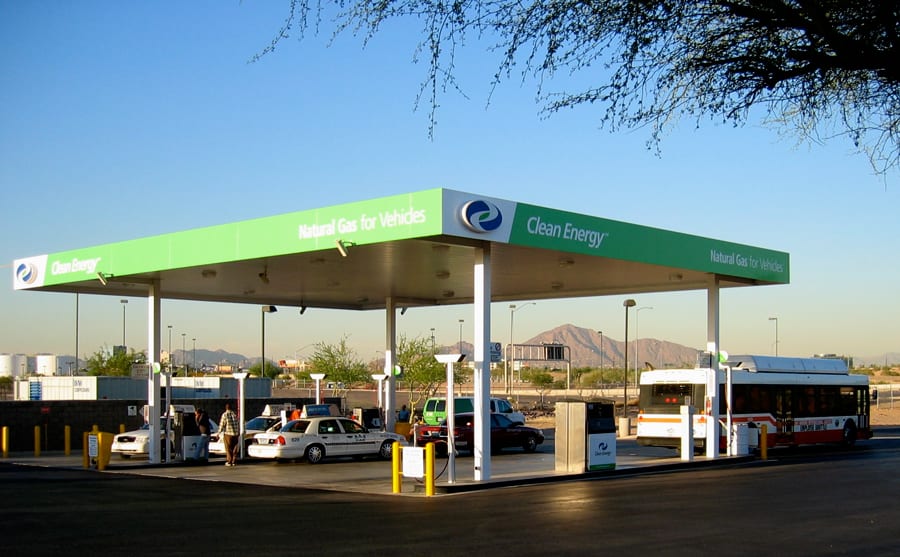There’s a scene in “Back to the Future Part II” where Doc Brown rummages through Marty McFly’s garbage cans frantically looking for fuel for his DeLorean time machine — banana peels, beer cans and any other waste he could shove into a contraption that transforms trash into transportation fuel.
Today, that future is becoming a reality through renewable natural gas (RNG), also known as biomethane, a clean-burning fuel that’s essentially converted trash from landfills, food waste, wastewater facilities and agricultural waste. For fleet managers who operate in California where the fuel is most abundant, RNG presents a compelling opportunity to promote your organization’s sustainability efforts to customers.
Renewable vs. Conventional Natural Gas
Like conventional natural gas, RNG is sold at the pump as compressed natural gas (CNG) and liquified natural gas (LNG). And vehicle conversion upfits for CNG or LNG are exactly the same, whether the fuel is derived from RNG or conventional natural gas.
The difference? Fuel source. Unlike conventional natural gas, which is produced from fossil fuels, RNG is derived from renewable sources through the breakdown of organic material in sewage and solid waste.
This means that organizations that want the environmental benefits of CNG or LNG — which burn up to 90 percent cleaner than gasoline or diesel — can also forgo fossil fuels altogether.
A Problem of Supply
The challenge for fleets interested in RNG is finding the fuel. As of press time, there are 872 CNG and 74 LNG public fueling stations in the U.S., according to the U.S. Department of Energy. But the number of stations that sell those fuels from renewable sources is much smaller, mostly concentrated in California where state incentives help make the cost of RNG more competitive with conventional natural gas prices.
Harrison Clay, president of Clean Energy Renewable Fuels, a major player in the RNG market, said that Clean Energy operates about 50 RNG retail stations in California. But if past performance is indicative of future growth, that number should increase significantly in the coming years. Clay says Clean Energy expects to sell 40 million gasoline gallon equivalents (GGE) of RNG in 2015, double the 20 million sold last year and nearly four times the volume of 2013.
What’s the price difference between RNG and conventional natural gas? In California and Oregon, where state tax credits for renewables fuels are most generous, the price at the pump for RNG is comparable to conventional natural gas, said Clay. “Outside those states, you would be looking at a premium for RNG of about 75 cents to one dollar per gasoline gallon equivalent.”
The bottom line, said Clay: “If you have a service tech driving a natural gas van in California, they can expect to pay no more for renewable natural gas than they would for fossil fuel natural gas.”
Business Case
So, if you can get the same fuel price for RNG as you would for conventional CNG or LNG and have sufficient fueling infrastructure available, is there a compelling business case for RNG?
From a purely economic perspective, a business case is harder to make right now — for both conventional and renewable natural gas. That’s because the cost of gasoline and diesel has plummeted the past few months, narrowing the price advantage that natural gas has held in recent years.
But from a public relations, sales and community goodwill perspective, RNG offers a compelling story to your customers that, if you have sufficient access to the fuel, could make it worthwhile to convert at least a portion of your fleet to RNG to cut emissions and consumption of finite fossil fuels.


Share this: